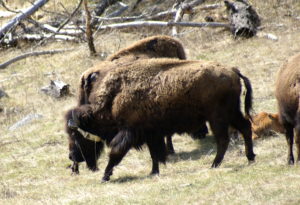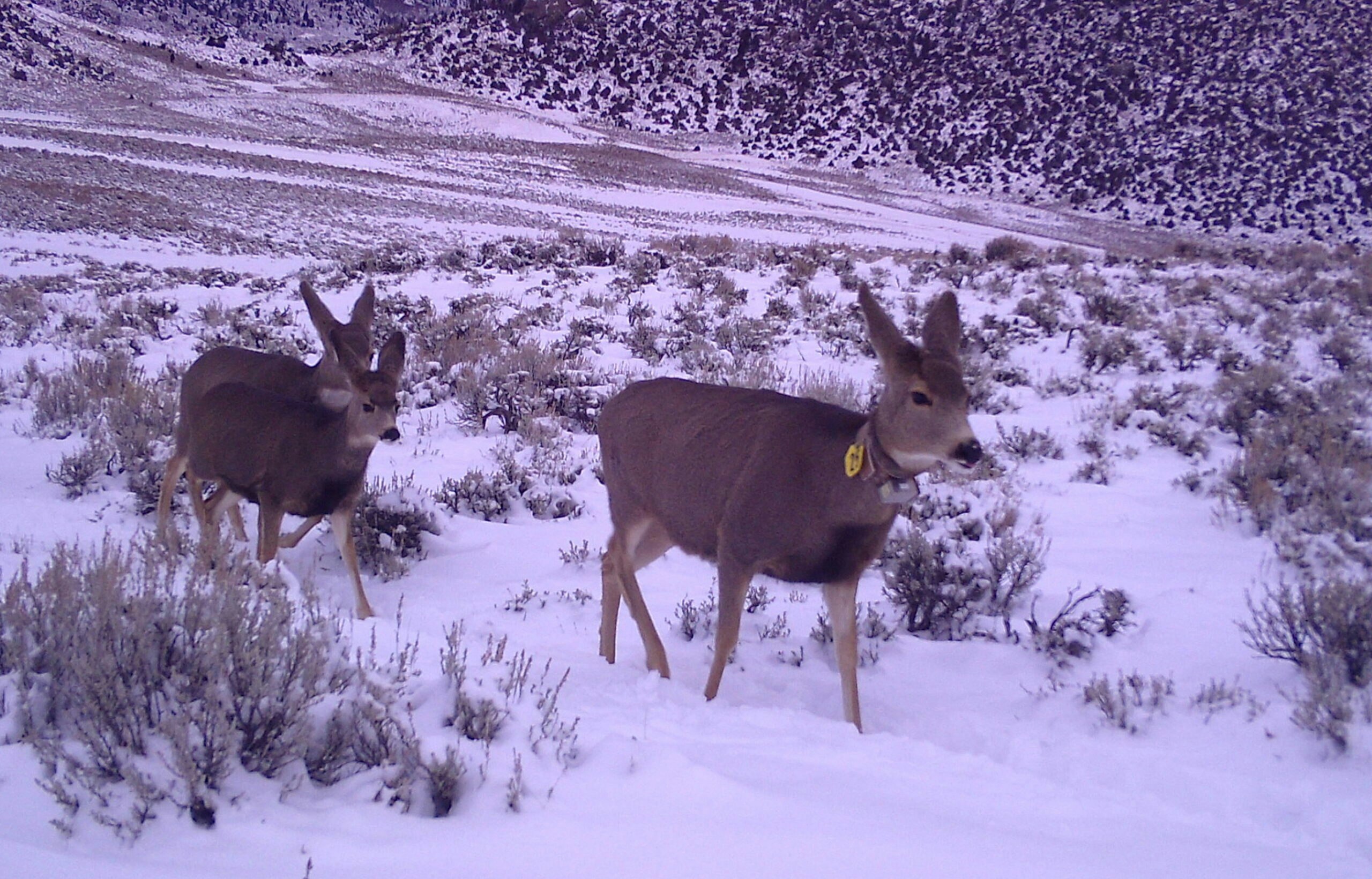By Cat Urbigkit, Range Writing columnist for Cowboy State Daily
There are probably thousands of tracking devices installed on wild animals in Wyoming.
From collars or eartag transmitters placed on big game animals and large carnivores like wolves and bears, to backpack harnesses or neck bands installed on a variety of bird species, and the surgical insertion of devices into fish, the amount of wildlife tracking conducted every year in Wyoming is astounding.

But the Wyoming Game & Fish Department (WG&F) can’t tell you how many animals are wearing these devices. I know that because I asked: first informally, and when that didn’t yield any information, I was instructed to submit a formal request, which I did. The response noted “there is not an easy way to show how many animals actually have collars on them at this point.” I was told that “it would take quite a few hours to go through each permit report” to see how many animals were actually collared under each permit issued by the department even in a single year, but if I wanted to pursue the matter, the agency would send me a cost estimate for that effort. I declined.
I had naïvely assumed there must be a central electronic location accessed by wildlife biologists to see the status of monitored animals, but that is not the case. Even the University of Wyoming’s Wildlife Migration Initiative’s Migration Viewer provides simple summaries of ungulate movements. WMI notes in bold type that “the raw location data can only be obtained by contacting the original data owner,” and “This allows us to share ungulate movement data with a broad range of users, while protecting the integrity of the datasets and the proprietary study or project needs of the many researchers that collected and own the data.”

Some of the tracking devices placed on wild animals in Wyoming are conventional, very-high-frequency (VHF); others provide satellite tracking; and still others make use of the global positioning system (GPS). But all wildlife research in Wyoming that requires live-handling of animals to attach tracking devices begins with obtaining a permit from WG&F. Although wildlife researchers have until January 1 of the year following their permit expiration to file a detailed report with the agency, it’s unfortunate that data-sharing with our state’s wildlife managers is limited to by-then dated information.
When the Teton County Planning and Development office contracted with Biota Research and Consulting, Inc., to identify, describe, and map important habitat features for a range of wildlife species as part of its county comprehensive plan process, Biota worked to develop GIS overlays for all wildlife species in the county. That process required identifying all available datasets in existence, held by both private and public entities conducting wildlife research. Biota ended up developing unique data sharing contracts “in the interest of meeting the various concerns about misuse of data from each of the project contributors.”
“Although some potential collaborators willingly shared their data, other potential collaborators in both the private and public sector clearly articulated their unwillingness to share data, or failed to provide data that they agreed to share,” Biota noted.
What prompted my interest in the issue was the appearance of radio-collared mule deer and pronghorn antelope on our place, and some of those collars were not properly fitted. Since some of the mule deer have an easily-read bright numbered tag attached to the outside of the collar, I assumed our local WG&F biologist would be able to provide information on when the collar was placed, and to what end (the goals of the research project). Alas, that is not the case. The public or private entity conducting the research retains the real-time specifics, while WG&F has more a general knowledge of what research projects are taking place, and can access the annual reports from those research projects.

Open sores and hair loss are frequent adverse effects from the use of radio-collars and other telemetry devices, as are animal entanglements in the collars themselves. Ill-fitting collars cause wounds and infections, and too tight a collar can restrict air flow and swallowing. As some researchers have pointed out, “ill-fitting collars and problems associated with them clearly influence research results and have implications for ethics within the wildlife profession.”
Behavioral impacts from the use of radio-collars are often discounted as insignificant, but there has been little research into this issue. Still, some research has revealed that collared moose in Norway keep in groups separate from non-collared moose. Brightly-colored collars on deer have resulted in higher harvest rates by deer hunters able to see these colors from a distance. Water and ice build-up under and around collars has been an issue for young ungulates. Other research has found impacts to a broad range of species, from voles to penguins.
There is no doubt that telemetry is an important tool in the research and management of many wildlife species. It’s my hope that researchers will strive for a better understanding of the potential negative consequences of strapping telemetry devices to wild animals (altering behavioral patterns should be a significant concern). And as science and technology advances, agencies like the WG&F may have to put in place better data-sharing mechanisms for the information harvested from wild animals in Wyoming.
Cat Urbigkit is an author and rancher who lives on the range in Sublette County, Wyoming. Her column, Range Writing, appears weekly in Cowboy State Daily. To request reprint permission or syndication of this column, email rangewritesyndicate@icloud.com.





